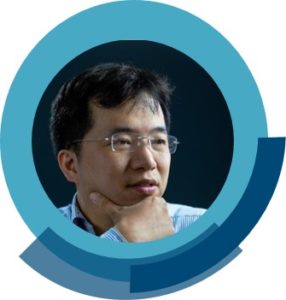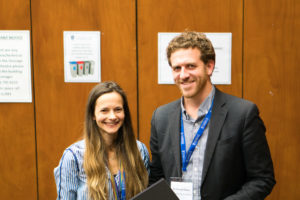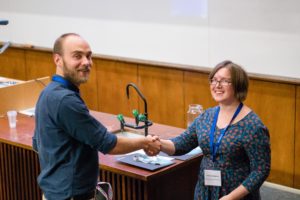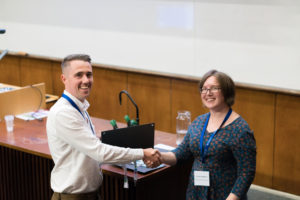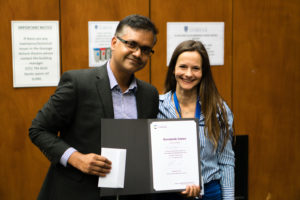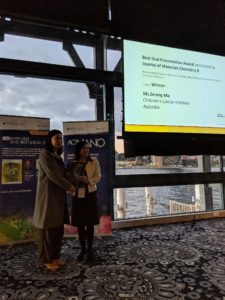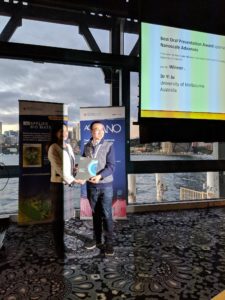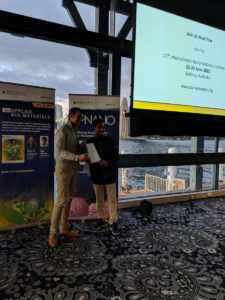We would like to highlight the Outstanding Reviewers for Journal of Materials Chemistry A in 2018, as selected by the editorial team, for their significant contribution to the journal. The reviewers have been chosen based on the number, timeliness and quality of the reports completed over the last 12 months.
We would like to say a big thank you to those individuals listed here as well as to all of the reviewers that have supported the journal. Each Outstanding Reviewer will receive a certificate to give recognition for their significant contribution.
Dr Michelle Browne, University of Chemistry and Technology Prague, ORCID: 0000-0002-3574-9113
Professor Joaquin Coronas, Universidad de Zaragoza, ORCID: 0000-0003-1512-4500
Dr Fei Du, Jilin University, ORCID: 0000-0001-6413-0689
Dr Yongjin Fang, Wuhan University, ORCID 0000-0002-8988-525X
Dr Prashun Gorai, Colorado School of Mines, ORCID: 0000-0001-7866-0672
Dr Binghong Han, Argonne National Laboratory, ORCID: 0000-0002-2919-3235
Dr Xingkang Huang, University of Wisconsin Milwaukee, ORCID: 0000-0001-7965-1866
Dr Charles Kappenstein, Universite de Poitiers, ORCID: 0000-0001-6695-9263
Dr Zaiyuan Le, University of California Los Angeles, ORCID: 0000-0002-9925-7513
Dr Tianyu Liu, Virginia Polytechnic Institute and State University, ORCID: 0000-0002-8716-749X
Professor Liqiang Mai, Wuhan University of Technology, ORCID: 0000-0003-4259-7725
Dr Xiangtong Meng, Dalian University of Technology, ORCID: 0000-0001-6611-7023
Dr Wee-Jun Ong, Xiamen University Malaysia, ORCID: 0000-0002-5124-1934
Dr Martin Oschatz, Max Planck Institute of Colloids and Interfaces, ORCID: 0000-0003-2377-1214
Dr Kaiyuan Shi, National Research Council Canada, ORCID: 0000-0002-9371-5405
Professor Seung Uk Son, Sungkyunkwan University, ORCID: 0000-0002-4779-9302
Dr Kaido Tammeveski, Tartu Ulikool, ORCID: 0000-0002-4144-4471
Professor Bart Van der Bruggen, Katholieke Universiteit Leuven, ORCID: 0000-0002-3921-7472
Dr Shengping Wang, China University of Geosciences, ORCID: 0000-0003-3064-9348
Professor Cafer Yavuz, Korea Advanced Institute of Science and Technology, ORCID: 0000-0003-0580-3331
Dr Xi Yin, Los Alamos National Laboratory, ORCID: 0000-0002-6624-5823
Dr Le Yu, Beijing University of Chemical Technology, ORCID: 0000-0003-1227-1273
Dr Yuan Yue, E O Lawrence Berkeley National Laboratory, ORCID: 0000-0002-6531-6546
Dr Mohamed Zakaria, Busshitsu Zairyo Kenkyu Kiko, ORCID: 0000-0003-2525-0092
Professor Bin Zhang, Tianjin University School of Science, ORCID: 0000-0003-0542-1819
We would also like to thank the Journal of Materials Chemistry A board and the materials chemistry community for their continued support of the journal, as authors, reviewers and readers.
If you would like to become a reviewer for our journal, just email us with details of your research interests and an up-to-date CV or résumé. You can find more details in our author and reviewer resource centre
Comments Off on Outstanding Reviewers for Journal of Materials Chemistry A in 2018


